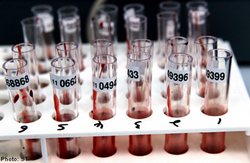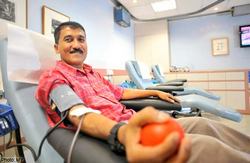He might have been born with cerebral palsy, but Mr Jovin Tan, 25, has never let his disability hamper him.
While he cannot walk and needs to use a wheelchair to get around, he expresses himself through sailing instead, picking it up at the age of 15.
It turned out that he was great at it. He was chosen to represent Singapore at the Paralympics first in 2004 then, again, in 2008. This September, he will once again represent Singapore in the global event in London. For his achievements, he will receive a Singapore Youth Award (SYA) 2012 on Sunday.
“I was born with this disability, and there is nothing I can do to change it,” he told my paper at a media conference at the National Youth Council in Toa Payoh yesterday. “(But) I wanted to do something meaningful with my life.”
He also described his love of sailing, and how he was introduced to it. When he was 15 years old, he was given the opportunity to try out sailing as a sport by the Singapore Disability Sports Council. He jumped at the chance, because he did not like being confined at home and wanted to experience the great outdoors.
Today, he says that sailing “really changed my relationships with family members”. He grew closer to his siblings – his brother, Kevin, 17, and his sister, Gina, 23 – who try to attend all of his training sessions.
In fact, Mr Tan said that his sister “is everything”.
She recently graduated from Singapore Polytechnic, where she studied tourism and resort management, but has put her career plans on hold to aid Mr Tan in his training for the London Paralympics. She hopes to accompany him to the event, to be held in Weymouth.
Mr Tan’s road to sporting excellence has not been easy. In 2004, he almost gave up his dream to enter the Paralympics. Training was rigorous and “I asked myself why I put myself through this torture”, he said.
He did not win any medals that year, but he has learnt from the experience. Today, his motto is that “there is no ‘can’ or ‘cannot’, only how much you want something”. He believes that anything can be achieved if you are willing to put in the effort.
Mr Tan is one of three recipients – the other two being youth mentor Aaron Maniam and research scientist Yeo Sze Ling – of the SYA 2012.
Dr Yeo, 35, is also disabled – she is blind. But she went on to achieve a PhD in maths, and helps other blind students cope with their disability in school.
On Sunday, the recipients will receive their awards from Prime Minister Lee Hsien Loong at the Istana.
The SYA is the highest national honour conferred on youth. It is given to youth who have excelled in their fields of pursuit and contributed significantly to society.
Past awardees include singer Stefanie Sun, bowler Remy Ong and 2004 Singapore Idol Taufik Batisah.
This article was first published in Asiaone


